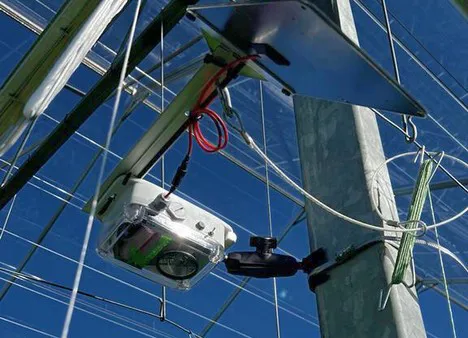Business owners in the horticultural sector and agritech can use automated image recognition to automate their crop observations and thereby optimize harvest and work scheduling. This technology is being developed by Ridder and is in part made possible thanks to UbiOps’ computation power.
The sector has the opportunity to get acquainted with Ridder CropView AI, as the new innovation is called, during GreenTech Amsterdam. With this innovation, Ridder is being nominated for the Greentech Concept Award, which will be presented at the international trade fair.
Image recognition
Ridder CropView AI was developed by Product Innovator Wilmar van Ommeren within Ridder’s innovation team. He was supported in this process by Rick Gitzels, who spent eight months with Ridder as part of the HortiTech Innovation Traineeship, set up by HortiHeroes, AVAG & TNO. “For our solutions, we gather lots of information about the plants in the greenhouse”, explains Wilmar, “We use, among other things, all kinds of climate sensors for this, but we also wanted input directly from the plant itself.”
For that purpose, pictures are required. Wilmar began the project at the end of 2021. “At that time, we were yet to do anything with image recognition. We didn’t have any data, any models, or even a computer to run those models on.”

So a powerful laptop was obtained, on which he was able to process the initial data and design models. “That was fine for that initial phase, but as soon as the quantities of data and computations increased, that laptop was no longer sufficient. We wanted to scale up and preferably without having to look after it ourselves. So I didn’t want to set up a platform myself, e.g., with Microsoft Azure.”
Proof of concept
UbiOps was able to meet those wishes. The initial contact came at the beginning of 2022. Wilmar explains: “The collaboration with UbiOps was an important step. The processing of the data and the training and adjustment of the models wouldn’t have been possible on that laptop. I recreated the pipeline that I had running on my own laptop on the platform. That was very easy to do: upload the Python code, then the UbiOps platform builds a docker around it. If your Python code works locally, it works in UbiOps too.”
At the beginning of 2023, Ridder and UbiOps created a proof of concept, which took just a month to do. “Now and then we stumbled upon things, but they always managed to resolve it quickly”, says Wilmar. “I sometimes had a request to adjust something, and then they appeared to already be working on it themselves. It was great that you had a contact person with whom to discuss things directly. In our case that was Kees van Bezouw. He has been an excellent help to us.”
Camera inspections
Ridder CropView AI works with two cameras that monitor the top and side of the greenhouse crop and takes a photo every hour.
They register, among other things, aspects such as growth and development of the crop, e.g., of the flowering clusters on a tomato plant and the thickness of the stem.
Rick explains: “This makes you more knowledgeable of the current status of your crop. That information can be used to manage the greenhouse and deploy staff. The stem diameter is an important indicator of how strong the plant is. The grower can then use this information to adjust their climate control.”
More and better data – for Agritech
Ridder CropView AI supplies more frequent and better-quality data. The analysis now happens visually and manually, usually once a week. Wilmar knows that “the grower takes measurements using a sliding gauge and notes down the data in a notebook, mobile phone or iPad.” Due to the high frequency, the system supplies more frequent and objective information. The system always measures in the same way.
“Another problem is that with major greenhouse businesses, several people take the measurements: different people who measure differently. As a result, your data is subjective and not entirely accurate, and all the actions you based on it are not actually accurate either.
Ridder CropView AI isn’t just fully automatic — it’s objective too. The system always measures in the same way.”
Scaling up
The photos are gathered in the cloud and are automatically sent to the UbiOps platform to perform the computations. Rick explains: “This is where our models operate, as this enables us to retrieve the values from the images. And we can then share that information with the grower. On a daily basis.”
More and more cameras will be used in the greenhouses. In large greenhouses, the numbers are considerable. Once Ridder CropView AI is on the market, Wilmar and Rick predict considerable growth, and so more computing capacity will be needed.
“Thanks to UbiOps, it will be very easy and quick for us to scale up. Because of the fact that everything happens in the cloud, it doesn’t matter where the greenhouse is located. We could have customers all over the world.”
For more information:
UbiOps
Wilhelmina van Pruisenweg 35
2595 AN, the Hague, the Netherlands
Tel.: +31 70 792 00 91
[email protected]
ubiops.com
